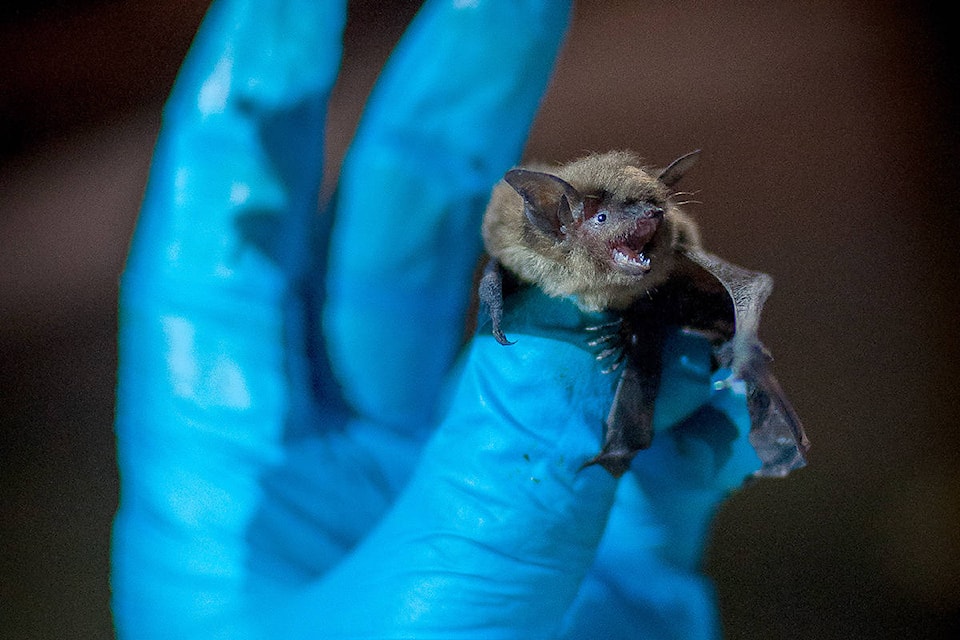It's that time of the year when bats are busy celebrating International Bat Week, fittingly scheduled from Oct. 24 to 31 to include the event the critters are often associated with.
"While Halloween images of spooky bats and blood-sucking vampires are classically fun, they have also created fear and misconceptions about these important animals," Southern Vancouver Island Community Bat Program coordinator Julianna Laposa-Wilde said in a media release. "International Bat Week is a great time to bust some myths."
Because bats in B.C. are major predators that devour many insects considered pests to the province's forestry and agricultural industries, they are actually an important part of the province's economy by providing millions of dollars in natural pest control for free, Laposa-Wilde noted.
"Host a Bat Week Party or other special event to get others excited about bats," she suggests as a way to learn more about the importance of bats. "You can feature bat-themed games or trivia, a bat costume contest, and foods and drinks in the shape of moths, mosquitoes, or other insects that our bats eat here, anything to highlight our amazing bats."
Laposa-Wilde also recommends contacting local nature centres, museums, or public park offices to see if they are offering any bat talks.
"Take your kids or grandkids to your local library and sign out bat books or a Bat Pack," she said. "Some library Bat Packs come complete with an echometre bat detector device, providing borrowers an opportunity to develop an understanding, appreciation and support for bats."
Bat Week also marks the time of year when bats disappear from neighbourhoods until the return of warmer weather in spring, which makes it a great time to do home renovations that have been delayed due to bat presence.
"You can clean out and repair a bat box, or do bat-friendly exclusion work without disturbing or injuring bats," she explained.
Most bats in B.C. have only one pup per female in the summer, and face many threats to survival. White-nose syndrome, a disease that has killed millions of bats in eastern North America, is caused by a fungus that attacks bats in winter when they are hibernating. It does not affect people or animals. It has not been found in B.C. yet, but has been found in Alberta, just south of B.C., and in the Seattle area.
The Southern Vancouver Island Community Bat Program is working with provincial government biologists to collect and test dead bats in order to detect White-nose Syndrome. Please report dead bats online at www.bcbats.ca, call 1-855-922-2287 ext.12, or email bat@hat.bc.ca.
“People can help us monitor bat populations by keeping an eye out for winter bat activity or dead bats," Laposa-Wilfde added. “If you find one, report it.”
She strongly cautions people to never touch a bat with bare hands or allow pets to come in contact with one.
Habitat Acquisition Trust, in collaboration with a naturalist from Capital Regional District Regional Parks, is co-hosting a bat walk on Oct. 27 from 1 to 2:30 p.m. Visit www.crd.bc.ca/about/events to learn more. Habitat Acquisition Trust will be hosting its annual Adopt a Bat Fundraiser to get Bat Week off the ground on Oct. 24. For more information visit www.hat.bc.ca/bats.



